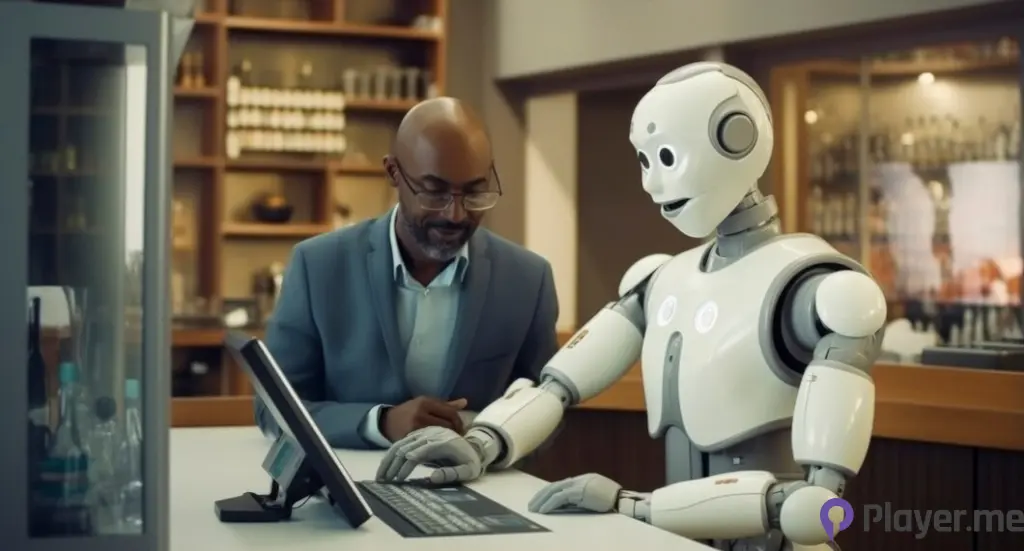Have you ever wondered how artificial intelligence is changing our lives?
“OpenAI” is at the forefront of this revolution.
From automating mundane tasks to sparking creativity, OpenAI is reshaping our interactions with technology.
Let’s dive into what OpenAI really is, how it works, and why it matters to you.
What Is OpenAI?
OpenAI is an artificial intelligence research organization that aims to ensure that artificial general intelligence (AGI) benefits all of humanity. Founded in December 2015, it has grown rapidly, developing models like GPT-3, DALL-E, and Codex.
These models are designed to understand and generate human-like text and images.
“OpenAI” focuses on safety and ethical considerations in AI development, prioritizing collaboration and transparency.
Why OpenAI Matters
You might be asking yourself, “Why should I care about OpenAI?”
Here’s the deal: AI is everywhere.
It’s in your smartphone, your online shopping experience, and even your favorite streaming services.
“OpenAI” is making these technologies smarter and more intuitive.
Key Areas of Impact
- Education:
– Personalized learning experiences.
– Tutoring and support for students.
– Administrative task automation for educators.
- Business:
– Streamlining operations.
– Enhancing customer service through chatbots.
– Analyzing data to drive decision-making.
- Creativity:
– Generating art and music.
– Assisting writers with content creation.
– Sparking innovation in various fields.
How OpenAI Works
At its core, uses machine learning, a subset of artificial intelligence.
Here’s how it typically breaks down:
Training: The models learn from vast amounts of text and data.
Understanding Context: They can understand the context of conversations, making interactions feel more natural.
Generating Responses: Once trained, they generate responses based on input, often providing insightful, relevant information.
Example in Action
Imagine you’re writing a blog post and hit a wall.
With “OpenAI’, you can input your ideas, and it’ll suggest content, help with phrasing, or even offer research material.
It’s like having a brainstorming buddy available 24/7.
Real-World Applications of OpenAI
So, what does this look like in practice?
Let’s explore a few specific applications of technology:
1. Chatbots and Customer Service
Many businesses now use AI-driven chatbots to enhance customer interactions.
These bots can handle inquiries, troubleshoot problems, and provide information without human intervention.
For example, a retail website might use a powered chatbot to assist customers with product selections or address common issues.
2. Content Creation
Writers, marketers, and content creators are tapping into for assistance.
From generating blog ideas to creating social media posts, the technology can streamline content creation, saving time and enhancing creativity.
3. Healthcare Innovations
In healthcare, is helping doctors analyze medical records, suggesting diagnoses, and even personalizing treatment plans based on patient history.
It’s a game-changer for improving patient outcomes.
4. Programming Assistance
For developers, Codex can interpret natural language commands to generate code snippets.
Imagine telling your computer, “Create a web page with a contact form,” and it just does it.
The Ethical Considerations of OpenAI
With great power comes great responsibility.
Acutely aware of the potential pitfalls of AI technology.
Addressing Bias and Fairness
AI can inadvertently perpetuate biases present in its training data.
Actively working to mitigate these risks, ensuring fair representation and unbiased outputs.
Transparency and Safety
Promotes transparency in its processes.
By sharing research and findings, it encourages collaboration within the AI community.
User Control
One of the key focuses is empowering users to control how AI interacts with them.
You get to define the level of interaction, ensuring that the technology serves your needs.
Frequently Asked Questions (FAQs)
What makes OpenAI different from other AI companies?
Commitment to safety, ethical AI development, and transparency sets it apart. Its models are designed not just for performance, but for responsible use.
How can I use OpenAI’s technologies?
You can access through various platforms, including API integrations, online applications, and even standalone tools for writing and creativity.
Is OpenAI free to use?
While offers some free tools, many of its advanced features and integrations come with a subscription or usage fee.
What are the future plans for OpenAI?
Aims to develop more advanced AI systems while continuously addressing ethical concerns and ensuring safety.
The Future of OpenAI
As we look ahead, the possibilities are endless.
Imagine a world where AI can help you with virtually anything—be it a complex business strategy or simply planning your next vacation.
Paving the way for a future filled with intelligent solutions that enhance our lives.
How to Get Involved
Stay Informed: Follow updates to learn about new developments.
Experiment: Use the tools available and see how they can help in your personal or professional life.
Participate in Discussions: Engage in conversations about AI ethics and its impact on society.
Conclusion
More than just a tech company; it’s a movement towards smarter, more responsible use of technology.
Whether you’re a business owner, a creative professional, or just someone curious about AI, there’s something in it for you.
The innovations Comingore transforming our world, making life easier, and opening up new possibilities.
As we continue to embrace these changes, one thing is clear: the future is bright with “OpenAI” leading the way.
Stay curious, stay engaged, and who knows what amazing things you might create with the power of AI by your side!
Read More: https://aitrendstoday.site/

